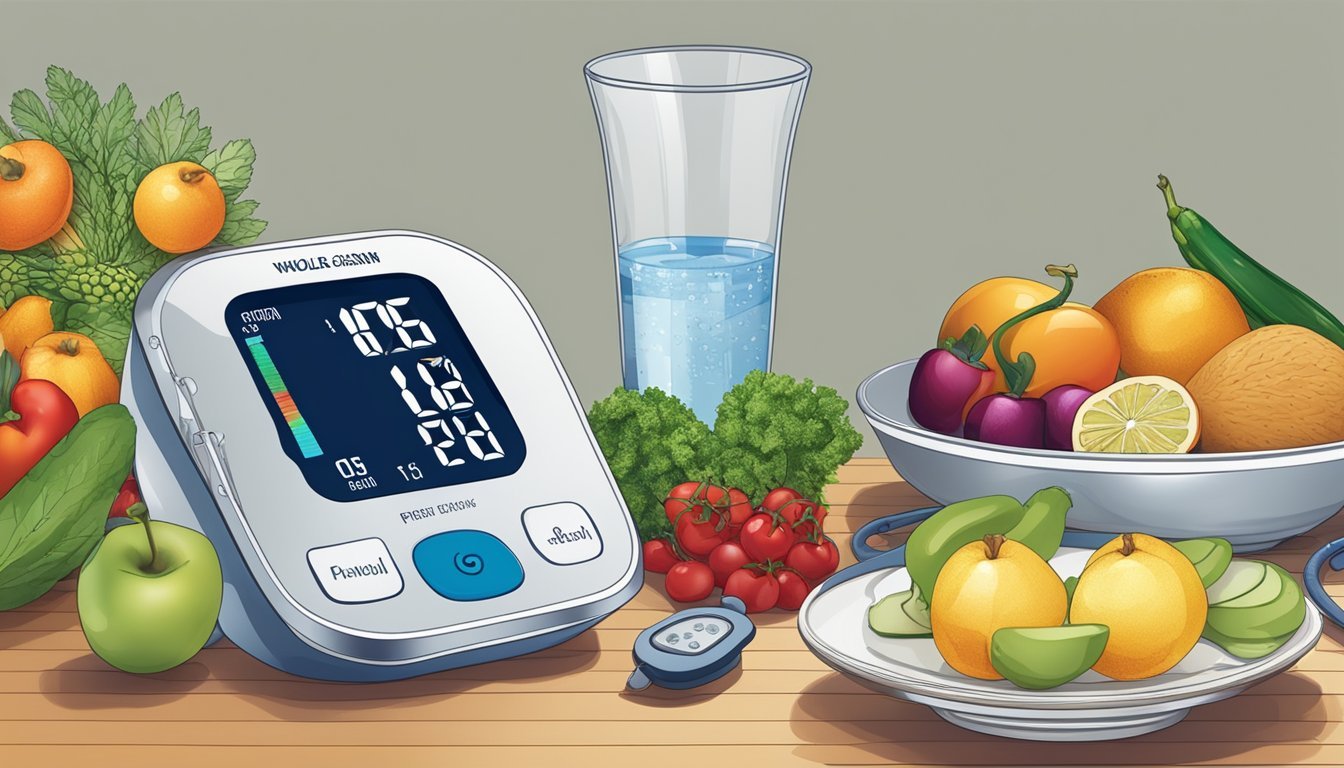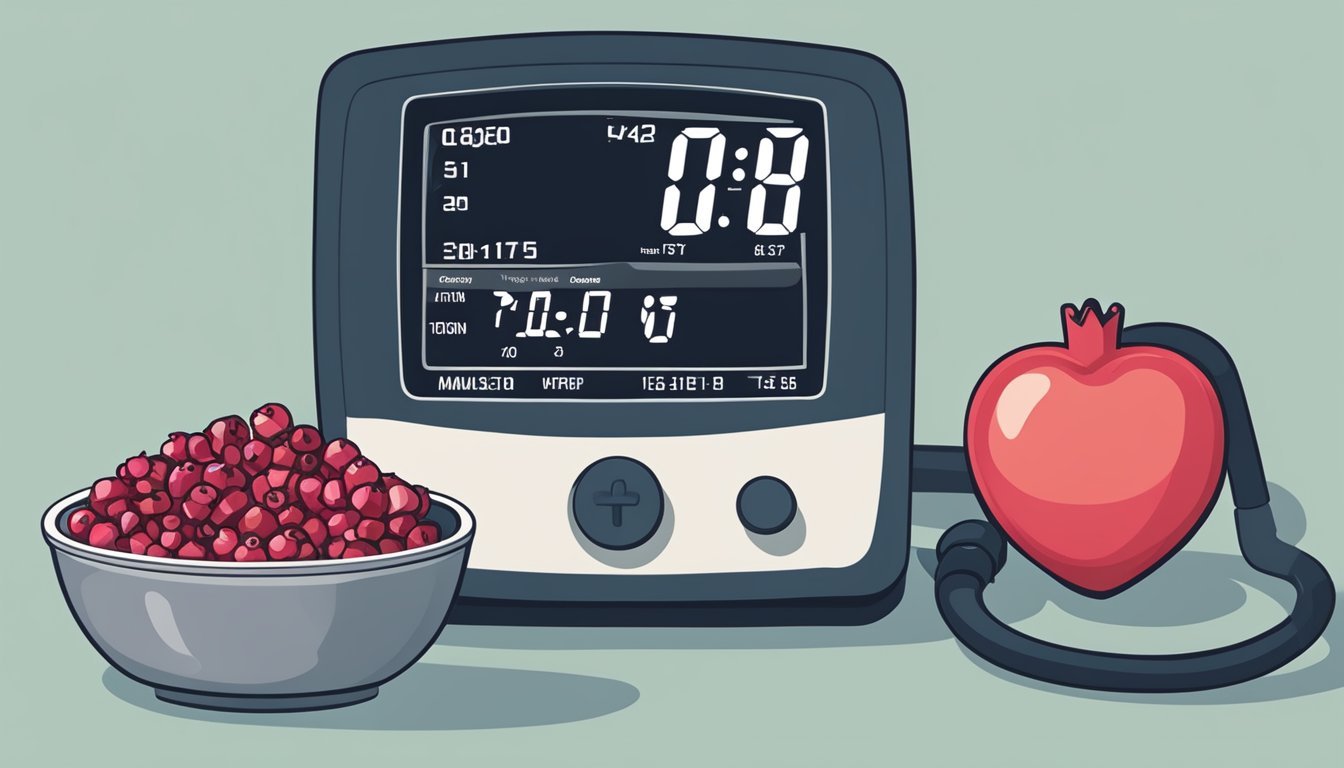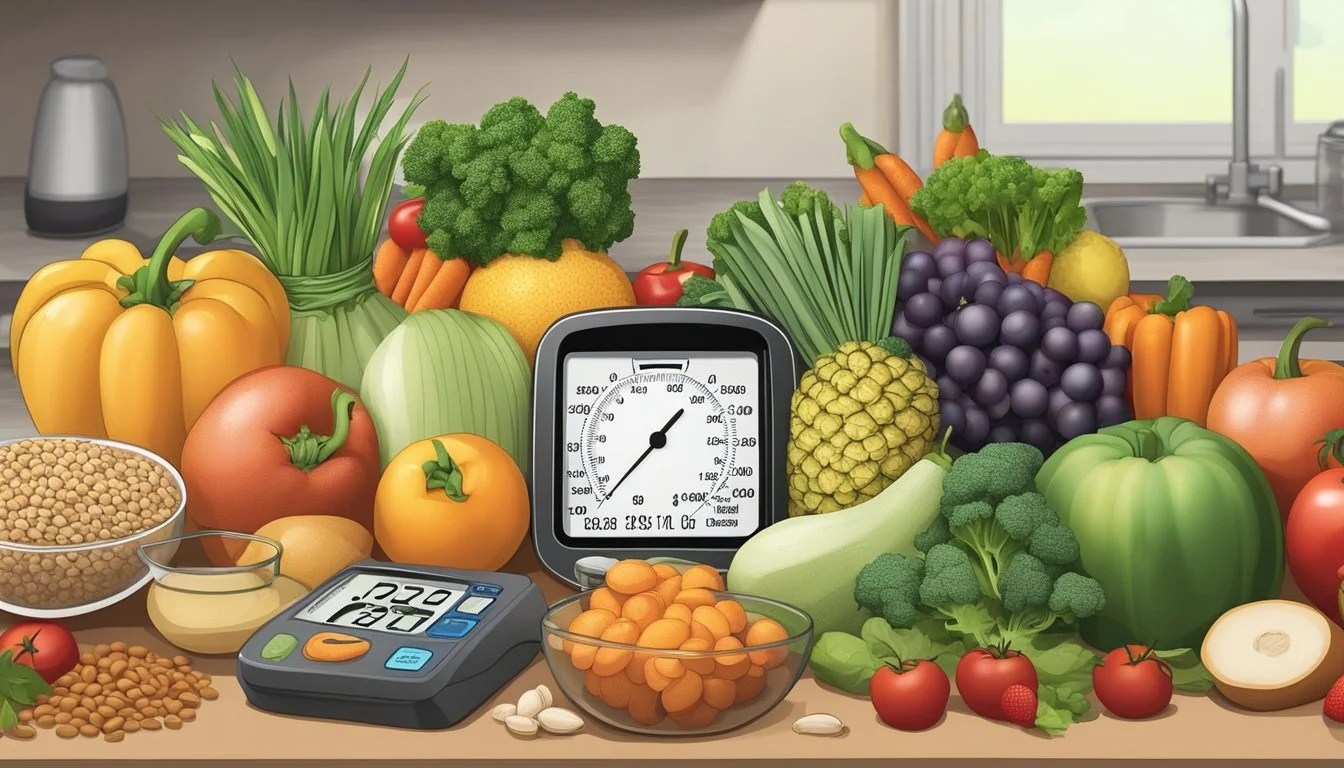Essential Foods to Naturally Boost Low Blood Pressure
Managing low blood pressure is essential for maintaining overall well-being and daily functionality. Dietary choices play a significant role in regulating blood pressure levels, offering natural and effective ways to counteract hypotension.
By incorporating certain foods into daily meals, individuals can effectively support their cardiovascular health. This article will explore the best foods and dietary tips to help manage low blood pressure, providing practical guidance for those seeking to maintain a healthy, balanced lifestyle.
1) Dark Chocolate
Dark chocolate contains flavonoids, which have been found to have heart-healthy benefits. These compounds can help lower blood pressure by causing the dilation of blood vessels.
Research, including studies from Harvard, suggests that consuming a small amount of dark chocolate daily can aid in reducing hypertension. This effect is primarily due to the presence of compounds that stimulate nitric oxide production.
Nitric oxide plays a crucial role in relaxing and widening blood vessels. This mechanism improves blood flow and decreases blood pressure, offering a natural way to manage hypertension.
For those with dietary restrictions, dark chocolate is often a non-dairy option, making it accessible to a broader range of people. Its benefits extend beyond just lowering blood pressure, as it also demonstrates anti-inflammatory properties and helps prevent blood clots.
Moderation is key when incorporating dark chocolate into a diet. Even though it has health benefits, it should be consumed as part of a balanced diet to maintain overall health and well-being.
2) Avocado
Avocado is a nutrient-dense fruit that can contribute to lower blood pressure. It is rich in potassium, a mineral that helps manage blood pressure levels by balancing the effects of sodium.
This fruit also contains healthy fats and fiber. These nutrients support cardiovascular health, potentially reducing the overall risk of heart disease.
The American Heart Association notes that regular avocado consumption is linked to a lower risk of heart-related diseases. Moreover, avocados provide up to 20% of the daily recommended dietary intake of fiber, a nutrient crucial for maintaining healthy blood pressure.
Because avocados are low in sodium and saturated fat, they are an excellent choice for people looking to manage their blood pressure. Including avocados in a balanced diet can help individuals maintain optimal heart health.
3) Bananas
Bananas are a valuable food choice for those looking to manage low blood pressure. They are rich in potassium, an essential electrolyte that helps regulate blood pressure levels. A single medium banana contains approximately 400 to 450 milligrams of potassium.
Potassium in bananas works to balance the sodium in the diet, promoting heart health and proper blood vessel function. This nutrient is especially important for individuals with low blood pressure as it aids in maintaining adequate fluid balance in the body.
According to the American Heart Association, potassium can help counteract the negative effects of sodium, thus stabilizing blood pressure. Including a banana in your daily diet is a simple, effective way to boost potassium intake.
In addition to potassium, bananas provide other nutrients such as vitamin B6 and vitamin C, which support overall cardiovascular health. They are also convenient to eat, making them an easy addition to meals or snacks throughout the day.
Bananas are versatile and can be enjoyed on their own or added to cereals, smoothies, and desserts. Their natural sweetness and soft texture make them a favored option for many.
4) Garlic
Garlic has shown promising effects on blood pressure management. Studies indicate that raw garlic, garlic powder, aged garlic extracts, or garlic oil can help lower blood pressure levels. Effective dosages for this benefit range widely from 12.3 mg to 2,400 mg per day over a period of 2 to 24 weeks, depending on the form used.
Garlic contains bioactive sulfur compounds, such as allicin, which seem to contribute to its blood pressure-lowering effects. These compounds enhance the production of nitric oxide, which helps relax blood vessels, facilitating better blood flow.
Even if the evidence is not entirely conclusive, incorporating garlic into a daily diet is beneficial. It can be easily added to various dishes like soups, salads, and sauces. Beyond blood pressure, garlic offers other health benefits, including boosting immunity and possessing antioxidant properties.
While garlic supplements are available, it's important to remember they shouldn't replace prescribed blood pressure medications unless advised by a healthcare professional. Consuming garlic in natural food form is generally recommended for most people.
5) Beetroot Juice
Beetroot juice has gained attention for its potential to lower blood pressure. Studies have shown that regular consumption of beet juice can lead to an average reduction in systolic blood pressure. This is primarily due to the natural nitrates in beets.
Nitrates in beetroot juice convert to nitric oxide in the body. Nitric oxide relaxes and dilates blood vessels, improving blood flow and reducing blood pressure. This effect can be beneficial for individuals with hypertension.
In addition to lowering blood pressure, beetroot juice offers various nutrients. It contains essential vitamins and minerals, such as potassium, vitamin C, and folate. These nutrients support overall cardiovascular health.
For those monitoring their calorie and carbohydrate intake, it's important to note that beet juice contains more calories and carbs than raw beets due to processing. Despite this, the health benefits of beet juice are compelling for those looking to manage their blood pressure naturally.
6) Spinach
Spinach is a versatile leafy green, rich in essential nutrients beneficial for controlling blood pressure. It is particularly high in potassium, a mineral known to counteract the effects of sodium in the body. Consuming potassium-rich foods like spinach can help maintain healthy blood pressure levels, making it a valuable addition to any diet aimed at managing hypotension.
Additionally, spinach contains significant amounts of magnesium, which is vital for promoting blood vessel relaxation and improving circulation. This can further support healthy blood pressure.
Another benefit of spinach is its fiber content. The insoluble fiber present in spinach aids in overall cardiovascular health. It does this by promoting digestive regularity and helping to maintain steady blood pressure levels.
Iron is an important nutrient found in spinach, especially beneficial for those following vegetarian or vegan diets. It supports the production of hemoglobin, essential for transporting oxygen in the blood.
Incorporating spinach into meals is simple. Whether added to salads, smoothies, or cooked dishes, its mild flavor makes it easy to enjoy regularly. For anyone looking to manage low blood pressure, spinach offers a variety of health benefits while being easy to integrate into daily meals.
7) Low-Sodium Diet
Following a low-sodium diet can be beneficial for individuals managing low blood pressure. Reducing sodium intake helps maintain healthy blood pressure levels by preventing excessive fluid retention and easing the workload on the heart.
A low-sodium diet emphasizes fresh vegetables, fruits, lean proteins, and whole grains. These foods are naturally lower in sodium compared to processed and packaged foods. For instance, fresh meat, poultry, and fish are preferred over their cured and canned counterparts.
Using herbs and spices instead of salt can enhance flavor without increasing sodium content. Garlic, lemon juice, and various spices offer tasty alternatives to sodium-laden seasonings.
When choosing packaged foods, it is important to read labels and select items marked as "low-sodium" or "no salt added." This includes options like low-sodium canned beans and low-sodium broths.
Incorporating potassium-rich foods, such as bananas, spinach, and sweet potatoes, can also support blood pressure regulation. Potassium helps balance sodium levels in the body and supports overall cardiovascular health.
By focusing on these dietary adjustments, people managing low blood pressure can create meals that are nutritious and heart-friendly while keeping sodium intake in check.
8) Salmon
Salmon is a highly nutritious fish that can help manage low blood pressure. It is rich in omega-3 fatty acids, particularly EPA and DHA, which have been shown to support cardiovascular health.
A 3.5-ounce (100-gram) serving of salmon provides a substantial amount of potassium. Potassium can help regulate blood pressure by balancing the effects of sodium in the body.
Salmon also contains essential nutrients like selenium, which is important for overall heart health. Consuming salmon regularly can be a beneficial addition to a diet aimed at maintaining healthy blood pressure levels.
Healthy fats in salmon may help reduce inflammation in the arteries. This can contribute to improved blood flow and proper heart function.
Eating salmon can also contribute to better hydration due to its water content. Staying hydrated is crucial for those managing low blood pressure.
9) Sweet Potatoes
Sweet potatoes are a nutrient-dense food that can play a role in managing blood pressure. They are rich in potassium, a key mineral for maintaining normal blood pressure levels. A sweet potato contains approximately 337 milligrams of potassium per 100 grams, which helps balance sodium in the body and eases tension in blood vessel walls.
In addition to potassium, sweet potatoes offer a decent amount of magnesium, another mineral important for blood pressure regulation. Consuming foods high in magnesium supports kidney function and overall cardiovascular health. This combination of potassium and magnesium makes sweet potatoes a beneficial food for those looking to control their blood pressure naturally.
Sweet potatoes also contain high levels of dietary fiber. Fiber has been linked to a lower risk of heart disease, as it aids in digestion and helps maintain a healthy weight. Eating fiber-rich foods can contribute to lower blood pressure by promoting cardiovascular health.
Adding sweet potatoes to one's diet can not only help in managing blood pressure but also provide a range of other health benefits. They are packed with antioxidants, which help combat inflammation and reduce the risk of chronic diseases. Sweet potatoes can be roasted, mashed, or incorporated into numerous recipes, making them a versatile and healthy choice.
10) Pomegranates
Pomegranates are known for their potential impact on lowering blood pressure. Rich in antioxidants, pomegranate juice can help improve cardiovascular health by reducing oxidative stress.
Studies have shown that consuming pomegranate juice may lower systolic blood pressure. In some cases, just 50 mL of pomegranate juice per day led to a significant drop in blood pressure among individuals with hypertension.
Pomegranates contain compounds that inhibit ACE (angiotensin-converting enzyme), promoting relaxation of blood vessels. This allows more blood and oxygen to circulate efficiently, which can positively affect overall heart health.
However, individuals on blood pressure medication should be cautious. Pomegranate juice can interact with these medications, leading to excessively low blood pressure or other complications. It's advisable to consult a healthcare provider before making them a regular part of the diet.
Additionally, pomegranates may interfere with the metabolism of certain medications, including blood thinners and statins. This interaction could potentially diminish the effectiveness of these drugs.
Despite these concerns, pomegranates remain a valuable fruit for many people. Their multiple health benefits and nutrient-rich profile make them a beneficial addition to a balanced diet.
Understanding Low Blood Pressure
Low blood pressure, or hypotension, occurs when blood pressure levels fall below normal. It can lead to symptoms like dizziness and fainting, which can interfere with daily activities. This section examines what defines low blood pressure and the symptoms associated with it.
What Is Low Blood Pressure
Low blood pressure, medically known as hypotension, is characterized by blood pressure readings lower than 90/60 mm Hg. Blood pressure is measured with two values: systolic (the pressure when the heart beats) and diastolic (the pressure when the heart rests between beats).
Hypotension can be classified into various types such as orthostatic hypotension, which occurs upon standing, and postprandial hypotension, which occurs after eating. Both types can affect a person's quality of life and may signal underlying health issues.
Common Symptoms of Low Blood Pressure
Common symptoms include dizziness, fainting, blurred vision, nausea, and fatigue. Severe hypotension can cause confusion, cold and clammy skin, rapid breathing, and a weak pulse.
Orthostatic hypotension can cause dizziness or lightheadedness when standing up quickly. Postprandial hypotension may result in weakness or dizziness after eating large meals. Recognizing these symptoms is crucial for managing daily activities and seeking appropriate care if needed.
Dietary Approaches to Manage Low Blood Pressure
Managing low blood pressure through diet involves incorporating nutrient-rich foods and ensuring proper hydration. Each plays a crucial role in maintaining and stabilizing blood pressure levels.
Nutrient-Rich Foods
Including nutrient-dense foods can help in increasing blood pressure. Folate-rich foods such as asparagus, beans, lentils, citrus fruits, leafy greens, eggs, and liver can be beneficial. Folate deficiency can lead to anemia, which may contribute to low blood pressure.
Increased salt intake can also raise blood pressure. Salty foods or even adding extra salt to meals can be helpful. For instance, sprinkling a pinch of salt into water or meals is an easy method. Whole grains, beans, protein sources, and healthy oils can further aid in maintaining normal blood pressure levels by providing a steady energy release.
Hydration and Blood Pressure
Staying properly hydrated is essential for those managing low blood pressure. Dehydration can cause a drop in blood pressure, making it important to consume enough fluids daily.
Drinking water is crucial and can be supplemented with electrolyte-rich beverages to maintain fluid balance. Slowly digestible foods such as whole grains and beans also contribute to hydration by helping the body retain more fluid over time. It's essential to discuss individual hydration needs with a healthcare professional for tailored advice.
Lifestyle Tips for Maintaining Healthy Blood Pressure
Maintaining healthy blood pressure can be significantly influenced by lifestyle choices. Two key factors are regular physical activity and effective stress management techniques.
Regular Physical Activity
Engaging in regular physical activity is essential for maintaining healthy blood pressure. Aerobic exercises, such as walking, jogging, cycling, and swimming, can strengthen the heart.
A stronger heart pumps blood with less effort, decreasing pressure on the arteries.
Recommendations:
Frequency: Aim for at least 30 minutes of moderate-intensity exercise most days of the week.
Variety: Include activities like resistance training and flexibility exercises to enhance overall cardiovascular health.
Consistency: Regular activity is crucial; even brief daily exercises can be beneficial.
Stress Management Techniques
Chronic stress can contribute to long-term increases in blood pressure. Implementing effective stress management techniques is vital.
Techniques:
Mindfulness and Meditation: Practices such as deep breathing, meditation, or yoga can help reduce stress levels.
Time Management: Efficiently organizing tasks and managing time can reduce stress-related pressures.
Social Activities: Engaging in social activities and maintaining strong relationships provides emotional support.
Regular practice of these techniques can help in maintaining a stable blood pressure reading.





